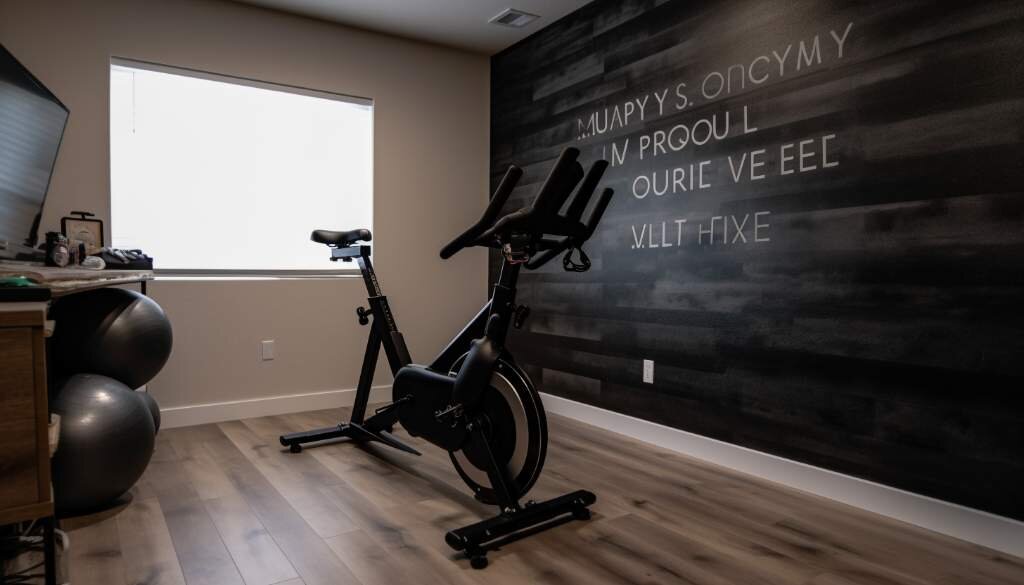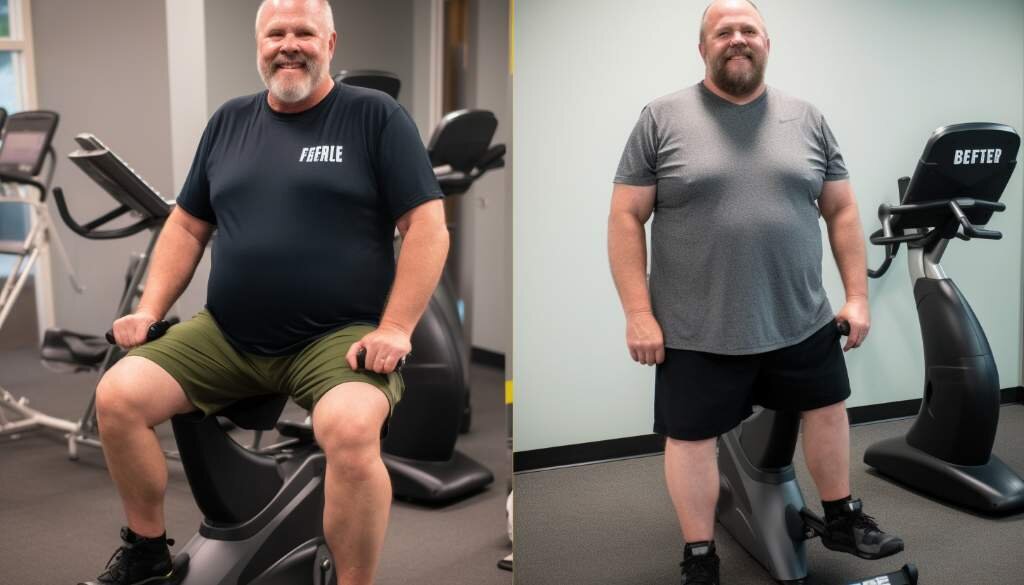
Introduction to Recumbent Bikes
Recumbent bikes offer a unique and comfortable way to enjoy cycling. With a reclined seating position and a pedal-forward design, these bikes provide a relaxed and ergonomic ride. They are becoming increasingly popular among cyclists of all ages and abilities.
This section will provide an introduction to recumbent bikes and set the stage for the topics that will be covered in the following sub-sections. Let's begin by understanding what recumbent bikes are and their history.
What are Recumbent Bikes?
Recumbent bikes are a unique type of bicycle that offers a comfortable and ergonomic riding position. Unlike traditional upright bikes where the rider sits upright on a narrow saddle, recumbent bikes have a reclined position with a wide and comfortable seat.
One of the defining features of a recumbent bike is the position of the pedals. Instead of being directly below the rider, the pedals are positioned in front of the rider's body. This allows the rider to use a pushing motion rather than a downward force, resulting in a more efficient and less strenuous workout.
The design of recumbent bikes offers several advantages. Firstly, the reclined position and the larger seat distribute the rider's weight over a larger area, reducing pressure on the buttocks and minimizing the risk of saddle sores and discomfort. Secondly, the lower center of gravity of a recumbent bike provides better stability, making it easier to balance and navigate corners and turns.
Recumbent bikes come in various shapes and sizes to accommodate different riding styles and needs. Some recumbent bikes have two wheels like traditional bikes, while others have three wheels for increased stability. Additionally, there are recumbent bikes with different steering mechanisms, such as handlebars attached to the seat or handlebars positioned in front of the rider.
Overall, recumbent bikes offer a comfortable and enjoyable riding experience while providing the same health benefits as traditional bikes. Whether you're looking for a relaxing ride, a form of exercise, or a mode of transportation, recumbent bikes are a great option to consider.
The History of Recumbent Bikes
The history of recumbent bikes can be traced back to the early 19th century. Although the exact origins are uncertain, the design of recumbent bikes is believed to have been influenced by the early attempts to create more comfortable and aerodynamic bicycles.
The first documented recumbent bicycle was created in 1869 by French engineer Charles Mochet. This bicycle, known as the ‘Velocar', featured a low, reclined position for the rider, allowing for improved comfort and reduced wind resistance. Mochet's design gained recognition in the 1930s when it was used by French cyclist Francis Faure to set numerous world records.
In the 1970s, recumbent bikes gained popularity in the United States. Bicycle enthusiasts and engineers began experimenting with different designs and configurations, aiming to create bikes that were not only comfortable but also efficient and fast.
One notable development during this period was the introduction of the long-wheelbase recumbent bike, which featured a longer frame and a more laid-back seating position. This design offered increased stability and improved weight distribution, making it more suitable for long-distance touring.
In the 1980s and 1990s, recumbent bikes continued to evolve with advancements in technology and materials. The use of lightweight materials like aluminum and carbon fiber allowed for lighter and more durable bike frames.
Recumbent bikes also saw a surge in popularity as a result of various successful long-distance races and competitions. Cyclists riding recumbent bikes achieved impressive speeds and endurance, highlighting the potential of these bikes.
Today, there is a wide variety of recumbent bikes available in the market, ranging from sleek and aerodynamic models designed for racing, to more comfort-oriented models suitable for leisurely rides or individuals with physical limitations. Recumbent bikes have gained a dedicated following among cycling enthusiasts, recreational riders, and individuals seeking a more comfortable and efficient alternative to traditional upright bikes.
The history of recumbent bikes showcases the evolution and innovation in bicycle design, aiming to provide riders with a more comfortable and enjoyable cycling experience. Whether you're looking to explore new cycling possibilities, improve your fitness, or simply enjoy a more leisurely ride, there is a recumbent bike out there for everyone.

Different Types of Recumbent Bikes
Recumbent bikes are a unique type of bicycle that offer a different riding experience compared to traditional upright bikes. They are designed with a reclined seating position, where the rider sits back and leans against a backrest. This positioning provides several advantages, such as improved comfort, reduced strain on the back and neck, and better aerodynamics.
When it comes to different types of recumbent bikes, there are various factors to consider, including the steering mechanism and options for older riders or those with physical limitations. In the following sections, we will explore these aspects in more detail.
Steering Mechanisms
When it comes to recumbent bikes, one of the key differences you'll notice compared to traditional upright bikes is the steering mechanism. The unique design of recumbent bikes allows for various steering options that can provide a different riding experience. Let's explore some of the common steering mechanisms found in recumbent bikes:
Above-Seat Steering (ASS)
One of the most popular steering mechanisms in recumbent bikes is above-seat steering (ASS). As the name suggests, the handlebars are positioned above the seat, allowing the rider to have a relaxed arm position while maintaining excellent visibility of the road ahead. This steering style is often preferred by riders who prioritize comfort and ease of use. Additionally, above-seat steering offers better aerodynamics, making it great for those who love speed and performance.
Under-Seat Steering (USS)
Another common steering mechanism in recumbent bikes is under-seat steering (USS). In this design, the handlebars are positioned under the rider's seat. This configuration is often favored by riders who value stability and control. With under-seat steering, your arms are positioned lower and closer to your body, allowing you to maintain a natural and comfortable riding position. USS is particularly preferred by cyclists who want to minimize wind resistance and maintain a more streamlined profile.
Direct Steering
Direct steering is a type of steering mechanism that is commonly found in recumbent trikes. Unlike traditional bicycles where the handlebars control the front wheel directly, direct steering uses a linkage system to connect the handlebars to the front wheels. This provides a smooth and responsive steering experience, allowing riders to easily maneuver around corners and navigate tight spaces. Direct steering is especially popular among recumbent trike riders as it offers stability and precise control.
Tilt Steering
Tilt steering is a unique steering mechanism that is commonly utilized in delta-style recumbent trikes. In this system, the entire front section of the trike, including the wheels and handlebars, can be tilted sideways. This enables the rider to lean into turns, similar to motorcyclists. Tilt steering provides a dynamic and exhilarating riding experience, allowing riders to feel connected to the road and experience the thrill of leaning into corners.
Choosing the right steering mechanism for your recumbent bike ultimately depends on your personal preferences and riding style. Some riders prefer the comfort and visibility of above-seat steering, while others prefer the stability and streamlined profile of under-seat steering. Recumbent trike riders may find direct steering or tilt steering more suitable for their needs. Whichever steering mechanism you choose, remember to consider factors such as comfort, control, and the type of riding experience you desire.
Options for Older Riders and those with Physical Limitations
When it comes to recumbent bikes, there are various options available that cater to older riders and those with physical limitations. These bikes are designed to ensure a comfortable and safe riding experience for individuals who may have difficulty with traditional upright bikes. In this section, we will explore some of the options that are suitable for older riders and those with physical limitations.
One popular option for individuals with physical limitations is the step-through recumbent bike. This type of bike features a low frame design that allows riders to easily step through and sit down without having to swing their leg over the frame. This makes mounting and dismounting the bike much easier for individuals with limited mobility or joint pain.
In addition to step-through designs, there are also recumbent trikes available. These three-wheeled bikes offer enhanced stability and balance, making them an excellent choice for older riders or individuals with balance issues. Recumbent trikes come in various designs, including Delta trikes, which have one wheel in the front and two wheels in the back, as well as Tadpole trikes, which have two wheels in the front and one wheel in the back.
Another consideration for older riders and those with physical limitations is the seating position of the recumbent bike. Some models offer a more upright seating position, which can be more comfortable and accommodating for individuals with back or neck pain. These bikes often feature adjustable backrests and seats, allowing riders to find the optimal position for their body.
Furthermore, recumbent bikes with electric assist options are also available for individuals who may require assistance with pedaling. Electric assist bikes provide a boost of power when pedaling, making it easier for riders to navigate inclines or ride for longer distances. This feature is particularly beneficial for older riders or individuals with limited leg strength.
When choosing a recumbent bike for older riders or those with physical limitations, it is important to consider individual needs and preferences. Test rides and consultations with knowledgeable bike shop professionals can help determine the best options for each individual.

Safety Considerations for Recumbent Bikes
Safety considerations for recumbent bikes are an essential aspect to consider when choosing the perfect ride. Whether you are a beginner or an experienced rider, understanding and implementing safety measures is crucial for a safe and enjoyable recumbent biking experience.
In this section, we will explore the various safety considerations associated with recumbent bikes. These considerations include the pros and cons of recumbent biking, popular brands and models that prioritize safety features, and more.
By familiarizing yourself with these safety considerations, you will be better equipped to make informed decisions about which recumbent bike is best suited to your needs and preferences.
Pros and Cons
When considering whether to invest in a recumbent bike, it's important to evaluate the pros and cons. Here are some key factors to consider:
Pros:
- Comfort: One of the main advantages of a recumbent bike is the ergonomic design. The reclined position reduces strain on the back, neck, and joints, making it a comfortable option for many riders. The wide seat and backrest provide additional support and promote good posture.
- Low Impact Exercise: Recumbent bikes offer a low impact workout that is gentle on the joints. This makes them suitable for individuals with arthritis, knee problems, or other physical limitations.
- Cardiovascular Benefits: Riding a recumbent bike can help improve cardiovascular health. It provides an effective cardiovascular workout that increases heart rate and helps burn calories.
- Safety: Recumbent bikes have a lower center of gravity compared to traditional bicycles, which enhances stability and reduces the risk of tipping over. This makes them a safer option, especially for older riders or those with balance issues.
Cons:
- Cost: Recumbent bikes tend to be more expensive than traditional upright bikes. However, the investment can be justified by the added comfort and benefits they offer.
- Size and Storage: Recumbent bikes are generally larger and require more space compared to upright bikes. They may not be suitable for individuals with limited space at home.
- Visibility: Due to the reclined position, visibility for the rider in traffic may be limited. It's important to exercise caution and use additional safety measures, such as reflective gear and lights, when riding on busy roads.
Popular Brands and Models
When it comes to popular brands and models of recumbent bikes, there are several options to choose from. These brands have established a strong reputation in the industry and offer high-quality bikes that cater to different needs and preferences.
One popular brand is Schwinn. Schwinn is known for its durable and reliable recumbent bikes. Their models are designed with comfort and performance in mind, making them a favorite among many riders. The Schwinn 270 Recumbent Bike is a top choice, offering a wide range of features including multiple resistance levels, built-in programs, and a comfortable seat.
NordicTrack is another well-known brand in the recumbent bike market. They offer a variety of models that are ideal for both beginners and advanced riders. The NordicTrack Commercial VR25 Elite is one of their top models, featuring a sleek design, a large touchscreen display, and a wide range of workout programs.
If you're looking for a recumbent bike with a more budget-friendly price tag, Exerpeutic is a brand worth considering. Their bikes are known for their affordability without compromising on quality. The Exerpeutic 400XL is a popular model, offering a compact design, easy storage, and a comfortable seat.
These are just a few examples of popular brands and models of recumbent bikes. It's important to do thorough research and consider your personal preferences, budget, and specific needs when choosing the perfect ride for you.

Recumbent Bikes for Exercise
Recumbent Bikes for Exercise are a popular choice for those looking for a low-impact and comfortable cardio workout. These bikes are designed with a reclined seating position, where the rider sits back in a chair-like seat and extends their legs forward to pedal.
In this section, we will explore various aspects of Recumbent Bikes for Exercise to help you choose the perfect ride. We will discuss the best overall recumbent exercise bikes, the best value options, and even models suitable for small spaces. Additionally, we will delve into the benefits of exercising with a recumbent bike and how it can provide a solid core workout.
Whether you are a fitness enthusiast or someone looking for a gentle way to stay active, recumbent bikes offer a variety of options to suit your needs. So let's get started and discover the world of recumbent bikes for exercise!
The Best Overall Recumbent Exercise Bikes
In this sub-section, we will explore the best overall recumbent exercise bikes, which are designed to provide users with high-quality performance, comfort, and durability. These bikes offer an excellent way to engage in low-impact cardiovascular workouts without putting excessive stress on your joints.
When it comes to choosing the best overall recumbent exercise bike, there are several factors to consider:
- Build Quality: Look for recumbent bikes that are built with sturdy materials and have a solid frame construction. This will ensure durability and stability during your workouts.
- Resistance Levels: The best exercise bikes offer a wide range of resistance levels to accommodate users of all fitness levels. Look for bikes that provide smooth and adjustable resistance for a challenging workout.
- Comfort: A comfortable seat with proper lumbar support is crucial for prolonged workouts. Look for recumbent bikes with ergonomic seats and adjustable features to find the perfect fit for your body.
- Console Features: A user-friendly console with clear displays and easy-to-use functions can enhance your exercise experience. Look for bikes with built-in workout programs, heart rate monitors, and other useful features.
- Price: Consider your budget and choose a recumbent bike that offers the best value for your money. Determine the features you need and compare prices to find a bike that meets your requirements.
Based on these criteria, here are some of the best overall recumbent exercise bikes on the market:
- 1. Schwinn 270 Recumbent Bike: This top-rated recumbent bike offers a wide range of features, including a comfortable seat, 25 levels of resistance, 29 workout programs, and Bluetooth connectivity. It also has a built-in heart rate monitor and a media shelf for entertainment during workouts.
- 2. Nautilus R616 Recumbent Bike: With a sturdy build, adjustable seat, and 25 levels of resistance, this bike provides a smooth and challenging workout. It features 29 built-in programs, Bluetooth connectivity, a USB charging port, and a media shelf.
- 3. Exerpeutic 900XL Extended Capacity Recumbent Bike: This budget-friendly option offers a comfortable and adjustable seat, eight levels of magnetic resistance, and a user-friendly LCD display. Although it has fewer features than higher-end models, it is a reliable and affordable choice.
- 4. NordicTrack Commercial VR21 Recumbent Bike: This bike stands out with its iFit compatibility, providing access to interactive training programs and virtual experiences. It features a comfortable seat, 25 levels of resistance, and a 5″ backlit display.
These recumbent bikes offer a great combination of performance, comfort, and value. Before making a purchase, it's important to try out different models and consider your specific needs and preferences. Remember to consult customer reviews and gather as much information as possible to make an informed decision.
The Best Value Recumbent Exercise Bikes
The Best Value Recumbent Exercise Bikes offer a combination of affordability and quality features that make them a great option for those looking to get started with recumbent bike workouts without breaking the bank.
When it comes to finding the best value recumbent exercise bike, there are a few key considerations to keep in mind:
- Price: Value bikes typically have a lower price point compared to high-end models. They provide a cost-effective option for beginners or budget-conscious individuals.
- Quality: While affordability is important, it's essential to ensure that the bike is well-built and durable. Look for bikes that have positive reviews for their construction and longevity.
- Features: Value bikes often come with essential features such as adjustable resistance levels, comfortable seating, and user-friendly consoles. Consider your specific needs and prioritize the features that are important to you.
Here are some of the best value recumbent exercise bikes available on the market:
- 1. Schwinn 230 Recumbent Bike: This popular model offers a great combination of affordability and functionality. It features a sturdy build, adjustable resistance levels, an ergonomic seat, and a user-friendly console. With pre-set workout programs and heart rate monitoring, it provides a comprehensive workout experience.
- 2. Exerpeutic 900XL Extended Capacity Recumbent Bike: This budget-friendly bike is designed for users of all fitness levels. It provides a smooth and quiet operation along with a comfortable oversized seat. The bike offers eight levels of magnetic tension control to customize your workouts and has a user-friendly LCD display.
- 3. Marcy Recumbent Exercise Bike: Marcy is known for producing high-quality and affordable exercise equipment, and their recumbent bikes are no exception. With adjustable resistance levels, a comfortable seat, and a compact design, this bike is perfect for small spaces. It also comes with a clear LCD display to track your progress.
Remember that the best value recumbent exercise bike ultimately depends on your budget and specific requirements. Consider your fitness goals, available space, and personal preferences when making your decision. With the right selection, you can enjoy the benefits of recumbent bike workouts without spending a fortune.
The Best Recumbent Exercise Bikes for Small Spaces
When it comes to choosing a recumbent exercise bike for small spaces, there are several factors to consider. First and foremost, the dimensions of the bike are crucial. Look for a compact recumbent bike that won't take up too much space in your home or apartment. Additionally, consider the folding feature, which allows you to store the bike easily when not in use.
One popular option for small spaces is the Schwinn 270 Recumbent Bike. This bike offers a compact design without compromising on features. It comes with a dual track LCD display, which allows you to monitor your progress conveniently. The Schwinn 270 also has a built-in fan to keep you cool during your workouts.
Another great choice is the Exerpeutic 400XL Folding Recumbent Bike. As the name suggests, this bike can be easily folded and stored away when not in use. Despite its compact design, it doesn't lack in functionality. The Exerpeutic 400XL features a large seat cushion and backrest for optimal comfort, along with a precision-balanced flywheel for smooth pedaling.
If you're looking for a recumbent bike that can fit into tight spaces, the Marcy Recumbent Exercise Bike ME-709 is worth considering. Its compact size makes it ideal for small apartments or rooms. The ME-709 features adjustable resistance levels, allowing you to customize your workout intensity. It also has a large console display that shows your speed, distance, time, and calories burned.
Lastly, the Sunny Health & Fitness Magnetic Recumbent Exercise Bike is another excellent option for small spaces. This bike has a sleek and compact design, making it easy to fit into any room. It offers eight levels of magnetic resistance, providing a challenging workout for users of all fitness levels. The Sunny Health & Fitness recumbent bike also features a comfortable seat with back support for maximum comfort.
When choosing the best recumbent exercise bike for your small space, prioritize features like size, folding capability, comfort, and resistance levels. Consider your specific needs and preferences to find the perfect bike that fits seamlessly into your limited space.
The Benefits of Exercising with a Recumbent Bike
Exercising with a recumbent bike offers a wide range of benefits that make it a popular choice for both beginners and experienced fitness enthusiasts. Whether you're recovering from an injury, looking for a low-impact cardiovascular workout, or wanting to build strength in your lower body, a recumbent bike can deliver results.
One of the key benefits of exercising with a recumbent bike is the low impact it has on your joints. Traditional upright bikes can put stress on your knees, hips, and ankles, especially if you have pre-existing conditions or are recovering from an injury. The reclined position of a recumbent bike takes the pressure off your joints, making it an ideal option for individuals with joint pain or arthritis.
Another advantage of using a recumbent bike is the comfortable and ergonomic design. The seat on a recumbent bike is larger and wider than a traditional bike seat, providing ample support for your lower back and buttocks. This design allows you to exercise for longer durations without discomfort, making it easier to achieve your fitness goals.
Recumbent bikes also offer a great cardiovascular workout. By pedaling at a steady pace, you can elevate your heart rate and improve your overall cardiovascular health. This type of exercise helps strengthen your heart and lungs, allowing them to work more efficiently. Regular cardiovascular exercise can reduce the risk of heart disease, lower blood pressure, and improve your overall fitness level.
In addition to cardiovascular benefits, recumbent bikes are excellent for toning and strengthening your lower body muscles. The pedaling motion engages your quadriceps, hamstrings, and calves, helping to build lean muscle mass. By increasing the resistance level of the bike, you can intensify your workout and challenge your leg muscles even more.
Using a recumbent bike also provides an opportunity for a full-body workout. While primarily targeting the lower body, you can engage your core muscles by maintaining proper posture and actively contracting your abdominal muscles. This adds an extra element of stability and strengthens your core, helping to improve overall balance and stability.
Furthermore, recumbent bikes offer a safe and controlled environment for exercising. Unlike outdoor cycling or using a traditional bike, you can exercise with a recumbent bike in the comfort of your own home or a fitness facility. This eliminates concerns about traffic, weather conditions, and potential accidents. With adjustable resistance levels, you can easily modify the intensity of your workout according to your fitness level and goals.
In summary, exercising with a recumbent bike provides numerous benefits, including low-impact joint support, comfortable design, cardiovascular fitness, lower body toning, core strengthening, and a safe exercising environment. If you're looking for an effective and enjoyable way to improve your overall fitness, a recumbent bike is a fantastic choice.
A Core Workout on a Recumbent Bike
A core workout on a recumbent bike is a great way to strengthen and tone your abdominal muscles while providing a low-impact cardiovascular exercise. Recumbent bikes offer a comfortable and supportive seating position, making them ideal for individuals with back pain, joint issues, or those recovering from injuries.
Here are some exercises you can incorporate into your recumbent bike workout routine to target your core:
- Cycling with Resistance: Increase the resistance on your recumbent bike and pedal at a moderate intensity. Engage your core muscles by maintaining an upright posture and contracting your abdominal muscles while pedaling. Focus on your breathing and try to maintain a consistent cadence.
- Side-to-Side Twists: While seated on the recumbent bike, place your hands lightly on the handlebars or sides of the seat. Twist your torso side to side, engaging your oblique muscles. Keep your movements controlled and avoid jerking or twisting too forcefully.
- Leg Lifts: Begin by cycling at a comfortable pace. Lift one leg off the pedals while maintaining your balance and engage your core muscles to stabilize your body. Alternate between legs and repeat for several repetitions on each side.
- Plank Holds: Once you've completed your cycling workout, dismount from the recumbent bike and transition into a plank position. Place your forearms on the ground, keeping your body in a straight line from head to toe. Hold this position for as long as you can, engaging your core muscles to maintain stability.
Remember to warm up before starting your core workout and cool down afterward. Start with a 5-minute warm-up of gentle cycling and finish with a 5-minute cooldown of light pedaling and stretching.
By incorporating these exercises into your recumbent bike workout routine, you can strengthen your core muscles, improve your posture, and enhance your overall fitness level.

Conclusion
In conclusion, recumbent bikes offer a unique and comfortable way to cycle. They provide a more relaxed and ergonomic riding position compared to traditional upright bikes. Whether you're a beginner, an older rider, or someone with physical limitations, there is a recumbent bike that can cater to your specific needs.
Recumbent bikes come in various types, with different steering mechanisms and options for older riders and those with physical limitations. It's important to consider your individual needs and preferences when choosing the right recumbent bike for you.
When it comes to safety, recumbent bikes have their pros and cons. On the plus side, the low seating position and laid-back riding posture offer better stability and reduced strain on the joints. However, it's essential to be cautious of visibility and make sure you're visible to other road users.
There are many popular brands and models of recumbent bikes available in the market today. It's essential to do thorough research and read reviews to find a reliable and reputable brand that suits your budget and requirements.
Recumbent bikes are not just for leisurely rides, they are also excellent for exercise. There are many recumbent exercise bikes available that provide a great workout for a range of fitness levels. They offer low-impact cardiovascular exercise and are particularly beneficial for individuals with joint issues or mobility limitations.
Whether you're looking for the best overall recumbent exercise bike, the best value option, or one that fits in small spaces, there are plenty of options to choose from. Exercising with a recumbent bike offers numerous benefits such as improved cardiovascular health, increased lower body strength, and better posture.
In summary, recumbent bikes are a versatile and comfortable alternative to traditional bikes. They are suitable for a wide range of riders, including older individuals and those with physical limitations. Whether you're looking for a bike for leisurely rides or for exercise, there is a recumbent bike that will meet your needs. Take the time to research and choose the right one for you, and enjoy the many benefits that recumbent biking has to offer.






